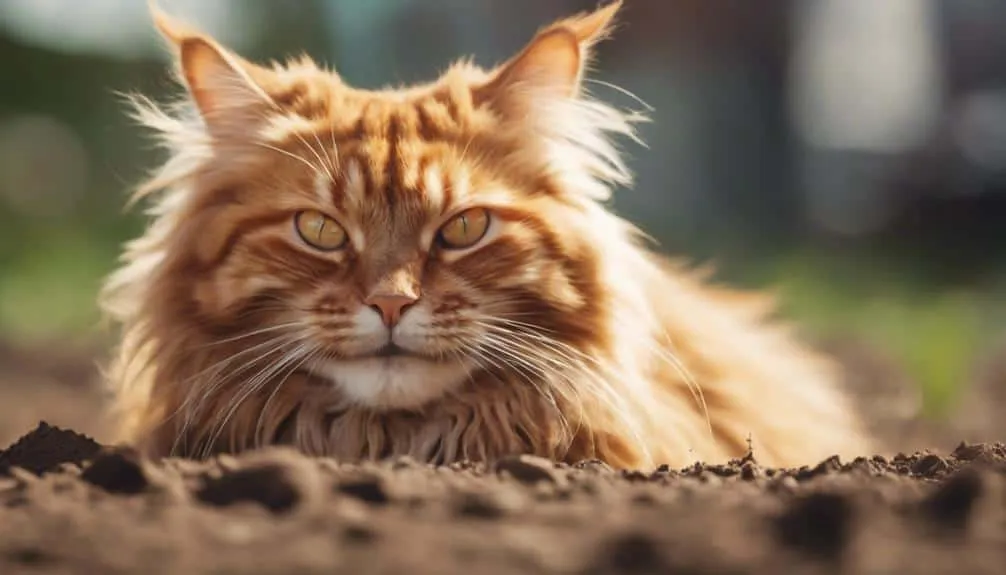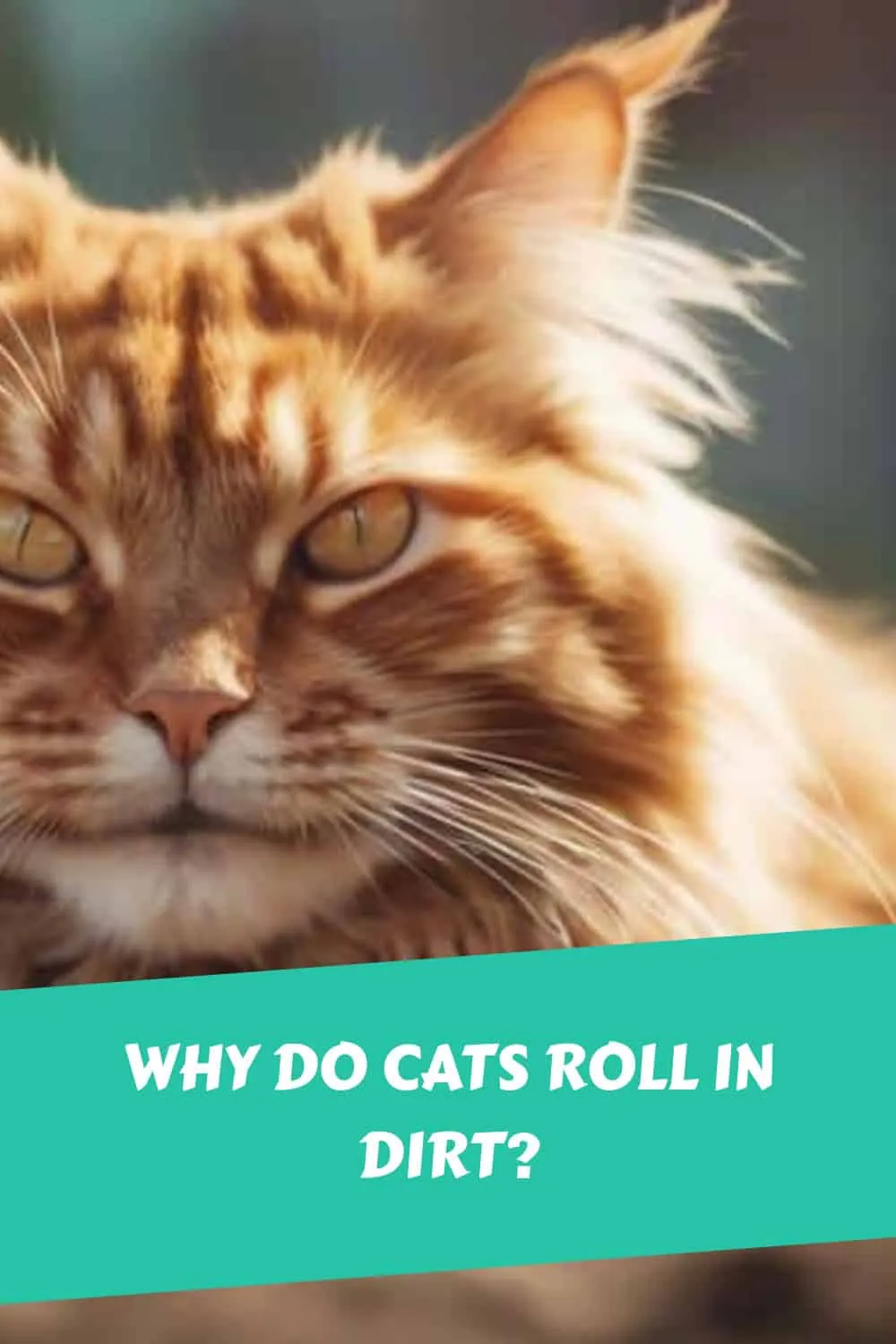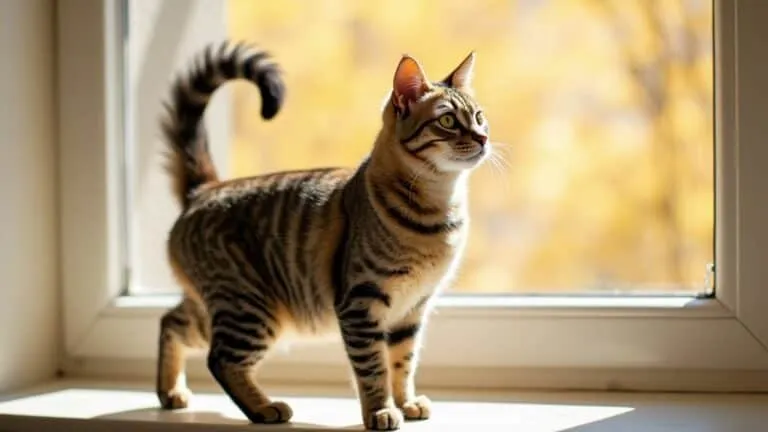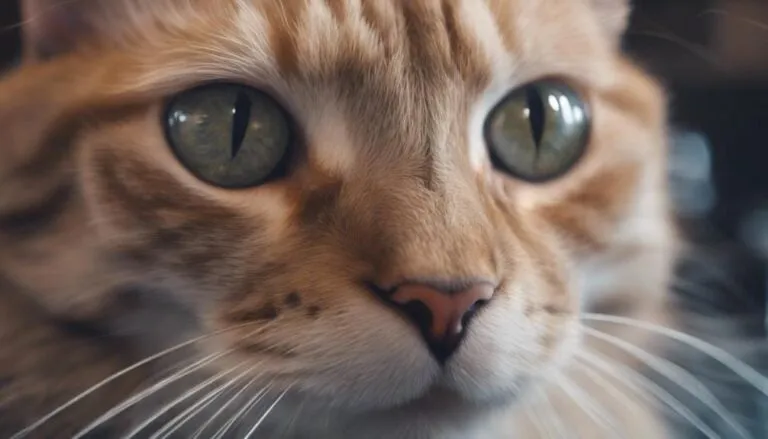The Best Fluffy Pancakes recipe you will fall in love with. Full of tips and tricks to help you make the best pancakes.

Have you ever wondered why your feline friend has a tendency to roll in dirt? The behavior may seem peculiar, but there's a fascinating reason behind it that goes beyond mere dirt baths. Cats' affinity for rolling in dirt is deeply ingrained in their instincts and serves a variety of purposes that are essential for their well-being. From communicating with fellow cats to maintaining healthy fur, the act of rolling in dirt is more than meets the eye. Discover the intriguing motivations behind this behavior and reveal the secrets of your cat's natural instincts at Catsgeek.com/Why-Do-Cats-Roll-In-Dirt.
Key Takeaways
- Rolling in dirt helps cats camouflage scent for hunting and is deeply rooted in their DNA.
- It serves as a form of sensory stimulation and communication, enhancing bonding with other cats.
- Territorial marking through rolling in dirt is a natural instinct for cats.
- Cats use dirt baths as a natural grooming method to regulate body temperature and remove debris.
- Rolling in dirt may offer health benefits like boosted immunity and improved skin health.
Cat's Instinctual Behavior
When observing a cat's instinctual behavior, you may notice a pattern of rolling in dirt that serves various purposes in their daily lives. Cats have retained their hunting instincts from their wild ancestors, and rolling in dirt can help them camouflage their scent to sneak up on prey more effectively. This behavior is deeply rooted in their DNA and showcases their innate skills as predators.
Moreover, rolling in dirt also plays a role in a cat's social behavior. In the wild, cats use scent to communicate with other felines, marking their territory and conveying information. By rolling in dirt, cats pick up different scents that they can then bring back to their social group, enhancing their ability to bond and communicate with other cats.
Understanding these aspects of a cat's instinctual behavior can provide insight into their natural tendencies and needs. By acknowledging and respecting these behaviors, you can better cater to your feline companion's instincts and enrich their quality of life.
Sensory Stimulation and Communication
Cats utilize rolling in dirt as a method of sensory stimulation and communication, tapping into their instinctual behaviors to interact with their environment and peers. This behavior serves as a form of play behavior for cats, allowing them to engage their senses and explore different textures and scents present in the dirt.
Rolling in dirt can provide cats with mental and physical stimulation, keeping them entertained and satisfied. Additionally, this activity can also be a way for cats to communicate with other felines. By rolling in dirt, cats can leave their scent behind, which acts as a form of social interaction and territory marking.
This scent marking helps cats establish their presence in the environment and convey information to other cats in the area. So, the next time you see your cat rolling in dirt, remember that it's not just about getting dirty; it's their way of engaging in play behavior and communicating with their feline companions.
Territorial Marking
To establish ownership and communicate boundaries, cats frequently engage in territorial marking through scent glands located on their bodies. This behavior is a natural instinct for cats and serves various purposes in their interactions with their environment and other animals. Here are three key points to help you understand territorial marking:
- Scent marking: Cats have scent glands on various parts of their bodies, including their cheeks, paws, and tail base. By rubbing these scent glands against objects or surfaces, cats leave behind their unique scent, which acts as a form of communication to other cats in the area.
- Behavioral instincts: Territorial marking is deeply rooted in a cat's behavioral instincts. It allows them to establish their territory, create a sense of familiarity in their environment, and convey information about their presence to other animals.
- Communication tool: Through territorial marking, cats can communicate information such as their presence, reproductive status, and social hierarchy within their community. Understanding this behavior can provide insights into how cats interact and navigate their surroundings.
Natural Grooming Method
Using their rough tongues and agile bodies, cats engage in a natural grooming method that helps them maintain their hygiene and regulate body temperature effectively. This grooming technique involves dirt baths, where cats roll in dirt to help remove excess oils and debris from their fur.
Despite appearing messy, dirt baths actually contribute to feline hygiene by mimicking the behavior of big cats in the wild. By rolling in dirt, cats can reach areas that are hard to clean with just their tongues, such as their backs and sides. This action also helps to prevent matting of the fur and remove parasites that may be present.
Additionally, rolling in dirt can assist in regulating body temperature by providing a cooling effect during hot weather. So, the next time you see your cat indulging in a dirt bath, remember that it's a natural grooming method essential for their well-being.
Possible Health Benefits
Engaging in dirt baths not only aids cats in maintaining their hygiene but also offers possible health benefits that contribute to their overall well-being. When your feline friend indulges in rolling around in dirt, it may seem messy, but it could be beneficial for their health. Here are some potential advantages:
- Boosted Immune System: Rolling in dirt exposes cats to various microorganisms present in the environment. This exposure can help stimulate their immune system, making it more robust and better prepared to fight off infections and diseases.
- Improved Skin Health: The texture of dirt can act as a natural exfoliant for your cat's skin. Rolling in dirt may help remove dead skin cells and excess oils, promoting healthier skin and potentially reducing the risk of skin issues.
- Enhanced Mental Stimulation: Engaging in natural behaviors like rolling in dirt can provide mental stimulation for cats, keeping them active and engaged, which is essential for their overall well-being.
Environmental Enrichment
How can you enhance your cat's environment to promote mental and physical well-being?
Environmental enrichment plays an important role in keeping your feline friend happy and healthy. By providing a stimulating environment, you can prevent boredom, reduce stress, and encourage natural behaviors.
For indoor activities, consider setting up a variety of interactive toys such as puzzle feeders, laser pointers, or feather wands to keep your cat mentally engaged. Creating vertical spaces with cat trees or shelves allows them to climb and perch, satisfying their natural instinct to be up high. Rotating toys regularly can prevent monotony and keep your cat entertained.
Outdoor exploration is also essential for your cat's well-being. If it's safe and feasible, consider creating a secure outdoor space like a catio or harness training your cat for supervised outdoor adventures. Outdoor exposure provides mental stimulation, exercise, and the opportunity to engage with the natural environment.
Frequently Asked Questions
Do All Cats Roll in Dirt, or Only Certain Breeds?
Most cats, regardless of breed, may roll in dirt as a natural grooming behavior. This action helps them to regulate their body temperature, remove excess oils from their fur, and potentially mask their scent for hunting or territorial reasons.
Can Rolling in Dirt Be a Sign of Stress or Anxiety?
Rolling in dirt can sometimes indicate stress or anxiety in cats. Environmental factors or behavioral triggers may lead to this behavior. Understanding your cat's grooming habits can offer insight into their mental health and help address underlying issues.
Are There Any Dangers Associated With Cats Rolling in Dirt?
When your feline friend engages in dirt rolling, it's like traversing a jungle of risks. This seemingly innocent act can expose them to skin issues, allergies, fleas, and parasites. Keep a close eye on their outdoor adventures!
How Often Should I Allow My Cat to Roll in Dirt?
To maintain cleanliness and cater to your cat's natural instincts, allow occasional dirt rolling. Monitor bathing frequency; adapt grooming routine. Encourage outdoor exploration for enrichment. Respect your cat's instincts while ensuring hygiene.
Is There a Correlation Between Rolling in Dirt and Hunting Behavior?
Reveal the mystery behind your feline friend's dirt fascination. Cats' love for rolling in dirt can be linked to their predatory instincts, aiding in territorial marking and communication. Observing this behavior sheds light on their wild roots.
Conclusion
As you watch your feline companion luxuriate in a dirt bath, remember that this seemingly quirky behavior is deeply ingrained in their instincts and serves various essential purposes.
From masking their scent for hunting to promoting skin health and mental stimulation, rolling in dirt is a natural and beneficial activity for cats. Additionally, rolling in dirt provides cats with a way to cool off and exfoliate their skin, helping to remove dead cells and impurities. It’s essential to understand why cats enjoy rolling in dirt, as they may also be marking their territory with their scent. This playful behavior allows them to engage their instincts and enjoy an enriching experience in their environment.
Embrace this unique aspect of their behavior, knowing that it contributes to their overall well-being and natural instincts.










